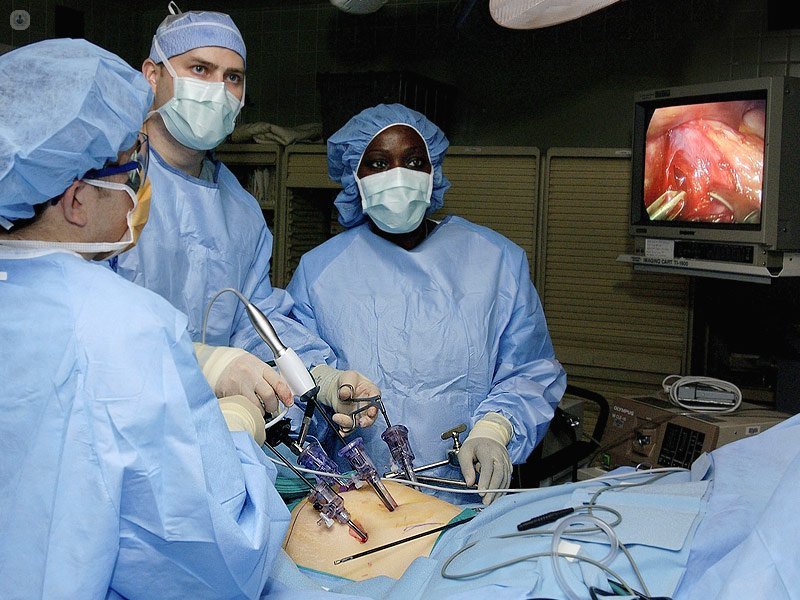Laparoscopic surgery in gynecology: the less invasive alternative
Written by:Laparoscopic surgery is a minimally invasive surgical technique. It treats, through small incisions, gynecological problems such as ovarian cysts, fibroids, endometriosis or genital prolapses, besides tumors.

What is laparoscopic surgery in gynecology
The surgical technique is minimally invasive surgery performed through small holes, rather than perform traditional abdominal incisions opening the abdomen.Normally in gynecologic laparoscopic surgeries are performed between 3 to 4 incisions 5mm in different areas of the pelvis. Then a gas is introduced into the abdominal cavity that distended, allowing carrying out the method. For one of the holes, usually at the navel, a camera is inserted, whose image is displayed by the surgical team on an external monitor. For the remaining holes some delicate instruments to perform the surgical procedure are introduced.
Advantages of laparoscopic surgery in gynecology
The main advantages of laparoscopic surgery include faster postoperative recovery, with a lower level of postoperative pain and reduced aesthetically unpleasant, due to smaller abdominal incisions. In addition, this mini-invasive technique is associated with a shorter hospital stay, less chance of infection and other complications and, ultimately, with a return to faster and more effective compared to conventional open surgery everyday activity.
Gynecologic conditions that laparoscopy is used
Laparoscopic surgery can be used in virtually all problems Gynecology requiring surgical treatment. By this technique they can be treated both benign diseases such as ovarian cysts, uterine fibroids, endometriosis or pelvic floor reconstructive until malignancies affecting the uterus and cervix or ovaries.Such conditions may require the following procedures:• Ovarian Cystectomy: The removal of ovarian cyst with conservation.• adnexectomy: is the removal of one or both ovaries and fallopian tubes (adnexal).• tubal ligation: represents the surgical blockage of the fallopian tubes.• Hysterectomy is the removal of the uterus.• Abdominal and pelvic lymphadenectomy: is removal of lymph nodes surrounding the main arteries and veins of the abdomen and pelvis.• Omentectomy: removal of a fatty tissue attached to the large intestine• Appendectomy -removal of the appendix
Recovery after laparoscopic intervention in gynecology
Hospitalization time and speed of global recovery will depend on the complexity of the procedure performed.Typically, patients are usually discharged the same day of surgery or the next day. At this point you may still suffer some mild discomfort that can be controlled with common analgesics orally. Through this type of surgery the patient can ingest food normally, climbing stairs, lifting heavy objects and lead a daily life as much as your pain allows from the day after surgery.
Edited by Patricia Crespo Pujante



